A student performs the experiment on tracing the path of ray of light passing through a rectangular glass slab for different angles of incidence. He measures the angle of incidence , angle refraction and angle of emergence for all his observations. He would find that in all cases.
is more than but (nearly) equal to .
is less than but (nearly) equal to .
is more than but (nearly) equal to .
is less than but (nearly) equal to .
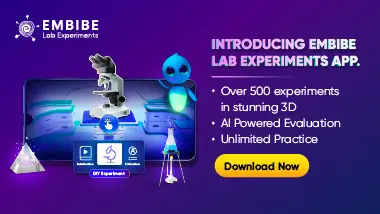
Important Questions on Light : Reflection and Refraction
Four students measured focal length of a concave mirror while performing an experiment as shown.
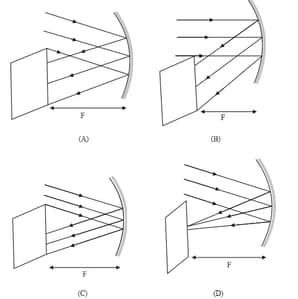
The picture which depicts the correct image formation is:
For the refraction through a rectangular glass slab the diagram is given below:
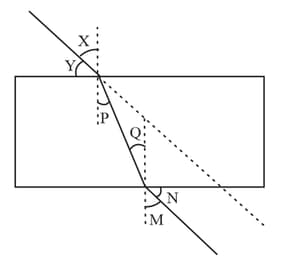
The angle of incidence, angle of a emergence and angle of refraction are respectively
In the adjoining figure, 'S' is the position of the screen on which a sharp image of a distant object (nearly away from the concave mirror of focal length ) is formed by the mirror 'M'. If the object moves towards the mirror by some distance, say , then to obtain the sharp image of the object on the same screen again the
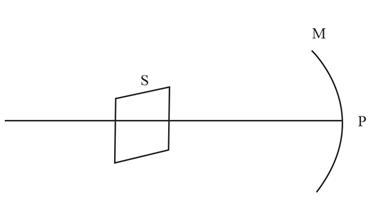
Parallel rays, from the top of a distant tree, incident on a concave mirror, form an image on the screen.
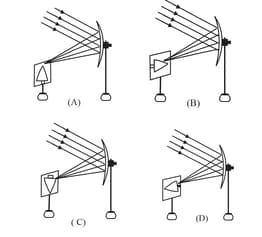
The diagram correctly showing the image of the tree on the screen is:
Study the following diagram and select the correct statement about the device 'X':
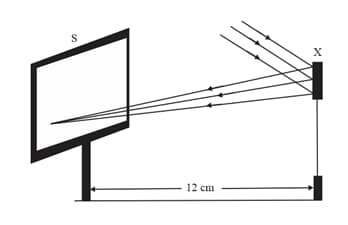
A student obtains a sharp image of the distant window (W) of the school laboratory on the screen (S) using the given concave mirror (M) to determine its focal length. Which of the following distances should be measured to get the focal length of mirror?
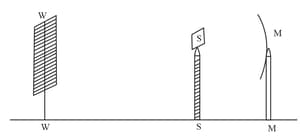
A student has obtained a point image of a distant object using the given convex lens. To find the focal length of the lens, he should measure the distance between the:
A student obtained a sharp image of a candle flame placed at the distant end of the laboratory table on a screen using a concave mirror to determine its focal length. The teacher suggested him to focus a distant building, about away from the laboratory, for getting more correct value of the focal length. In order to focus the distant building on the same screen, the student should slightly move the
